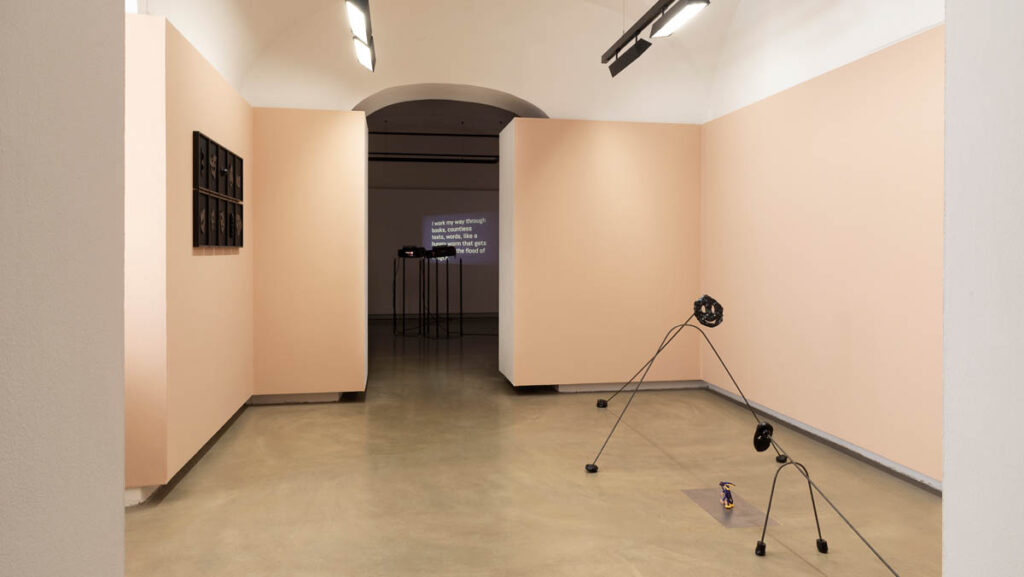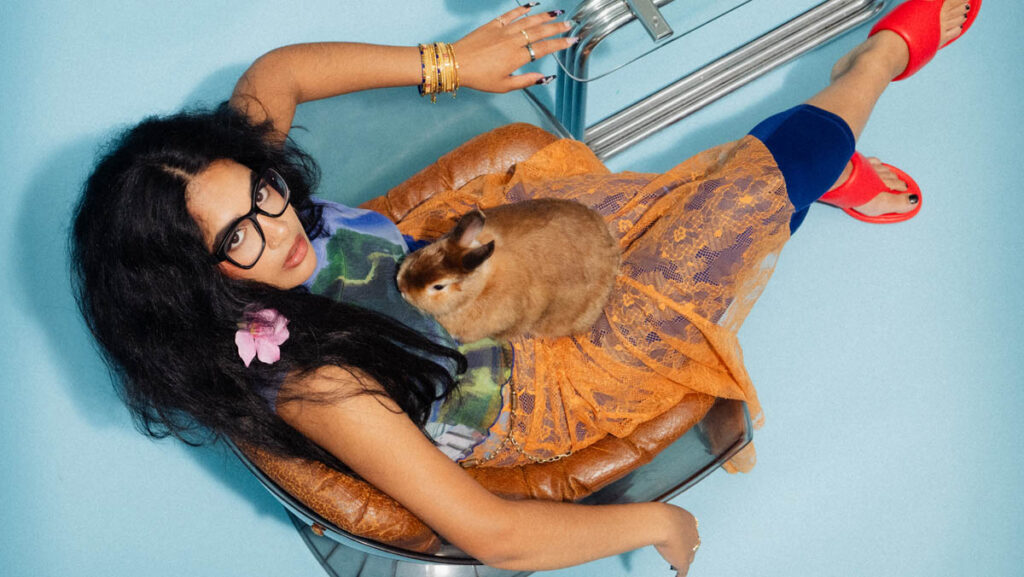
In the interview, Cassie Holland, one of the founders, elaborated on HADES‘ role as a champion of craftsmanship and responsible design, ensuring that each piece is crafted to endure the test of time.
Tell us how it all started. Please introduce us to the team.
HADES was founded eight years ago in London; it was a creative project that evolved into something bigger. I began designing band knits for my friends; I showcased them on Instagram, and they went viral. Now that I run HADES with my sister, Isabel, we design in collaboration. As well as knitwear, we produce ready-to-wear skirts, which are constructed in England. We champion local manufacturing and heritage craftsmanship.
Our wider team incorporates our partner knitwear manufacturer, who produced our very first small run. They are based on the borders of Scotland, in Hawick, a town that has been the center of the knitwear trade since the 18th century. We also work with local craftspeople, embroiders, and seamstresses; for example, the metal buttons on our cardigans are crafted in the historic Jewellery Quarter in the Midlands. The HADES team is made up of Emma, Maya, Helena, and Susannah; our studio is in the Midlands, England.



Why HADES? Is it connected to the famous Greek god of the underworld?
Yes, it is. In Greek mythology, people were afraid to say the word „HADES“ as it represented the underworld, where the spirits of the dead resided after passing. So they’d employ different euphemisms. It was a myth that I enjoyed; hence, it inspired our name. In recent years, I’ve taken an interest in Carl Jung’s theories and been drawn to stories of journeying into the underworld as a symbol of gaining new consciousness and honouring the shadow; this has helped bring new meaning to our name for me.



Explain to us the process of making a piece, from the idea to the result—how you decide on motives, colors, and details such as buttons.
Isabel and I work collaboratively on the designs. Our collections are influenced by counterculture, radical figures, and their ways of living. Visually, we might start with a leitmotif, a shape, or a muse; we then develop the collection together.
We work closely with our technicians and the craftspeople that we partner with, and we will undertake rounds of sampling, whether on buttons or to create the right screen-printing effect. Every collection is different, sometimes we have a very specific concept, and other times we’ll just experiment in an unplanned way. Occasionally the design develops in production and the final piece looks different from our original design; that’s part of the joy of creation.


Except on your website, where else can we find your pieces?
We sell globally through our website, with free worldwide shipping and no customs fees to Europe. As well as the UK, we are stocked in Japan, South Korea, Portugal, and the United States. This September, we are launching our Autumn Winter collection in our new shop, which will be in Mayfair, London.
How are you choosing your team of photographers and stylists for your photo shoots? Who is in the role of creative direction?
We’re a small team, and myself and Isabel still creatively direct every shoot. Our artistic input is most strongly established in the mood board creation and the selection of the shoot team. We take visual inspiration from an assortment of places: eras of history, cultural movements, literature, and visually from dance, old punk fanzines, etc. Overall, we are trying to create a beautiful bricolage.
We choose to collaborate with people whose work speaks to us. Most recently, we chose to work with the photographer Maria Mochnac, who created striking images of PJ Harvey over a few years. Maria and PJ Harvey’s images were powerful influences on my own creative aesthetic. We gathered with Maria and the HADES team in a Jacobean House in the middle of England. It was a very free and exploratory photo shoot.
Often in your pieces, there are quotations from David Bowie; for example, what is HADES in relation to Bowie?
Each winter, we release a band collaboration, always partnering with musicians that we love. We have created designs that celebrate Joy Division, Bowie, The Sex Pistols, Devo, and Blondie. Sometimes we have worked directly with the artists and worked collaboratively on iconography, silhouettes, and colourways, such as Robert Smith of The Cure, or, on our longest running collaboration, with X-Ray Spex, we work directly with Poly Styrene’s daughter, Celeste. It was a privilege and a thrill to get to work with Bowie’s iconography. We had so much fun as his artwork included so many colours, fonts, and great album titles.

What kind of pieces can we find in your ‚The Eccentrics‘ collection, and why is it called that?
The collection consists of three skirts (Phallic, Dorothea and I’m Bored), which are all screen-printed in our studio, and three cardigans, which are manufactured in our factory in Scotland. The cardigans include the ‚Fuck‘ cardigan and the ‚Cigarette‘ cardigan, both of which have buttons that are made by local craftspeople.
The collection was inspired by eccentrics such as Josephine Baker, Little Edie, and Isabella Blow. These were the muses we thought of when designing, as well as the words of John Waters: „Have faith in your own bad taste.“ The collection was conceived as a riposte to the quiet luxury trend, which we found stifling and uninteresting, we wanted to celebrate idiosyncrasy and loud aesthetics.

The Sartre Skirt is one of my favorite pieces. Why Sartre?
We are instinctive designers, and our collections and leitmotifs are always influenced by our interests at the moment. We wanted to create a collection of skirts and knits that were influenced by Sartre’s Huis Clos and the existentialists. We’ve also explored the works of Virginia Woolf and Mary Shelley; literature is a recurrent theme in our designs.

The Narcissus Cardigan and Scarf are also on my favorites list. Can you explain to us the technology behind how the cardigan is made and how this „printing“ effect is there?
The Narcissus cardigans and scarves have been some of our most popular knitwear designs in recent years. The aesthetic is achieved using digital printing; we’re always looking to combine colours that aren’t traditionally paired. Every garment begins with the fabric; these pieces are made from pure lambswool. The wool for all our cardigans originates from a mill in Vicenza, Italy. The process of crafting each piece mixes technology with ancestral processes. We work closely with our technicians to print in digital panels; these are then linked together by hand, sewing the button band and buttons on, and adding all the trimmings.
Who will be your perfect customer, and why?
I was asked this question a few years ago, and I said that it would be a thrill to see Chloë Sevigny in any of our pieces. Then, two years ago, she posted our Carrington Cardigan on Instagram. Isabel and I were returning from dinner when the notification popped up. That was an exciting moment.

We appreciate anyone who supports HADES, we are also pleased that we have many repeat customers, some of whom have bought pieces from every single collection that we have released. I’ve spotted HADES a few times in the wild, on the street, and that gives me the most joy, getting to see how people style the pieces and what other brands they pair us with.

What should we be wearing this summer?
The I’m Bored skirt from the Eccentrics collection and our new Alphabet bags. For a surrealist finish, pair the look with a house-hold item worn as a hat.





